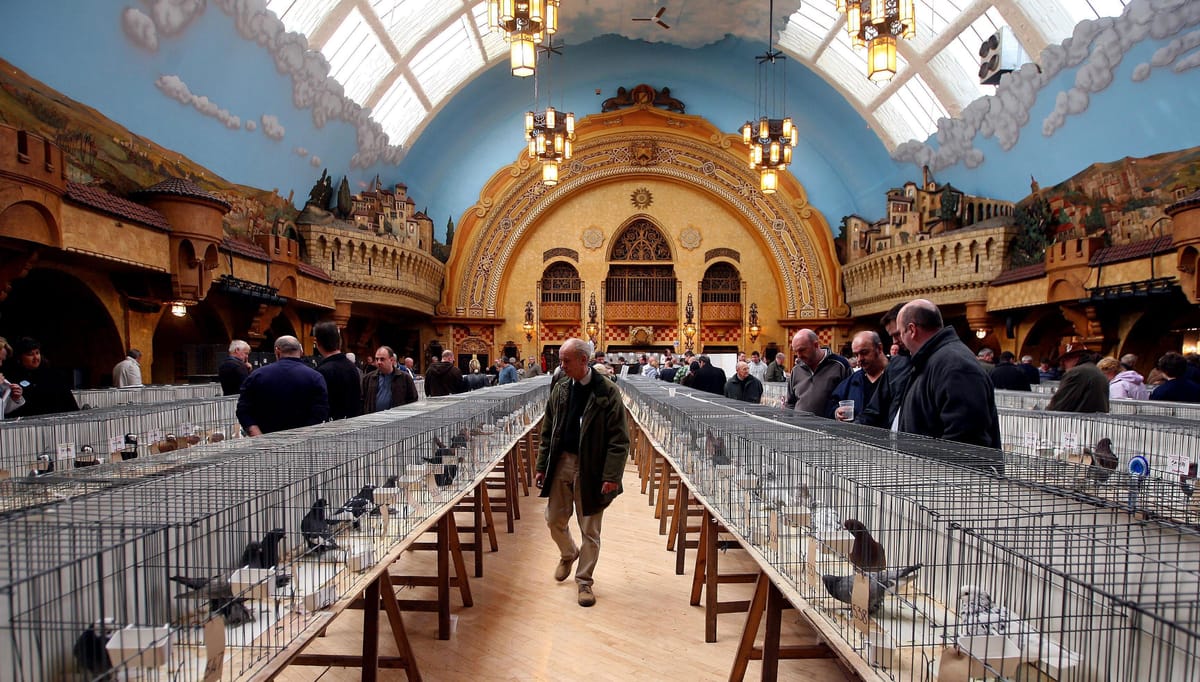The easiest way to tell the difference between a racing pigeon and a street pigeon is to look at their feet. Feral street pigeons, raised on a cannibalistic diet of discarded fried chicken and stale breadcrumbs, have lurid red talons. Working pigeons’ claws are a smoother, paler orange.
There are other differences, too. Racing pigeons have lush, proud plumage. They’re bigger — yet swoop gracefully, rather than descend en-masse to plague tourists on the South Bank.
Standing in a garden in Mitcham, south London, a man named Terry Goodsell patiently explains all of this to me. He points to a red-taloned pigeon, perched on the roof of his house, as an example. This one is half-feral, half-domesticated: Terry raised it after it was abandoned by its own mother. But he has to keep it away from his other birds. He can’t let it infect them. Behind Terry a shed — also known as a dovecote — gently coos. It’s filled with 64 sex-segregated pigeons that will soon race hundreds of miles across Europe for their master.
Terry Goodsell, 76, is a builder by trade, but his passion has always been pigeons. Now retired, he spends most of his time at his local club in Mitcham, caring for the birds in the dovecote he built in his back-garden, or speaking to people who might be interested in the sport. Those people come round all the time. A teenage boy doing a project for his A-Levels; a young woman thinking of taking up pigeon-keeping; even a therapist with her client, seeking exposure therapy for her paralysing fear of birds. “She was stroking their feathers by the end,” recalls Terry.
Register for free to read this article.
